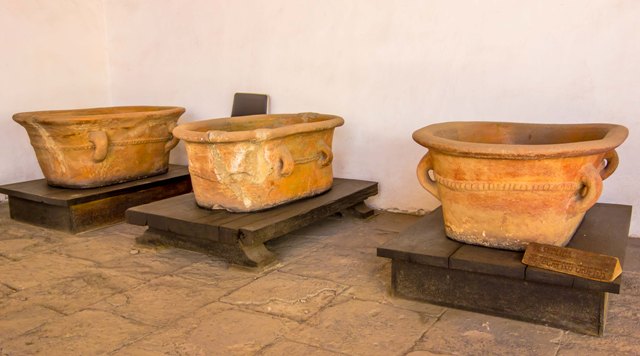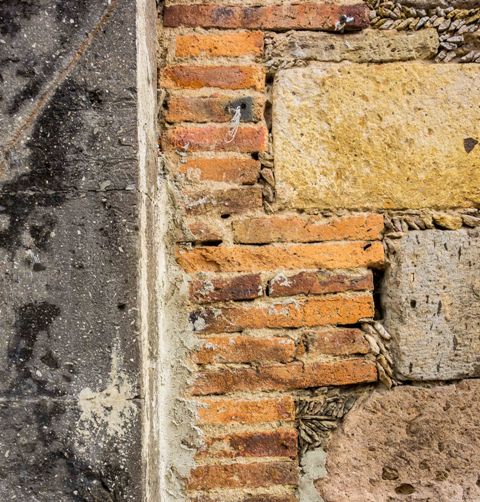 |
| Ceramic pineapples for sale in Tlaquepaque |
 |
| Courtyard of the Museo Regional de la Cerámica |
 |
| Entrance to Museo Regional de la Cerámica |
 |
| Large polychrome vase in the Museo Regional de la Cerámica |
 |
| Ceramic tiles in the Museo Regional de la Cerámica |
 |
| Ceramic pineapples in the Museo Regional de la Cerámica |
 |
| Ceramic bathtubs in the Museo Regional de la Cerámica |
 |
| Santuario de Nuestra Señora de la Soledad |
 |
| Interior of the Santuario de Nuestra Señora de la Soledad |
 |
| Pope John Paul II in front of Parroquia de San Pedro |
 |
| Exterior wall of Parroquia de San Pedro showing various building styles |
A
larger-than-life statue of Hidalgo freeing the slaves dominates the square (link). On December 6, 1810, Hidalgo, head of an alternative government that he established in Guadalajara, issued a decree abolishing slavery (and threatening slave owners who didn't with death) and the tributes that the indigenous paid to their "lords" (link). The plaque on the base talks about the "courageous nation taking up arms to throw off the yoke of oppression that existed for almost 300 years" and includes three "declarations" that appear to be quoted from Hidalgo's decree.
For decades, Tlaquepaque has been described as a shopper’s dream. Shops,
galleries and restaurants, many of which are housed in old haciendas, as well as many public artworks, line Independencia Eje (hub or center of activity), which is pedestrian-only, and Calle Juárez.
 |
| Miguel Hidalgo y Costilla |
 |
| Independencia, the main shopping street in Tlaquepaque |
 |
| "El Centro de te Mismo" (The Center of Yourself) by Sergio Bustamante (link) |
 |
| "La Musa de Sorrento" (The Muse of Sorrento) by Sergio Bustamante |
 |
| Independencia |
 |
| Rande with a statue by Rodo Padilla |
 |
 |
| Section of a large ceramic tile mural by Cantú |
 |
| Small ceramic tile murals for sale in Cantú's gallery |
In La Casa Histórica (The Historic House), General Pedro Celestino Negrete, a Spanish
politician and military man in the interim Mexican government, signed the Plan
de Iguala that consummated Mexican independence from Spain on June 13, 1821
(from a plaque on the building).
 |
| La Casa Histórica |
 |
| La Casa Histórica |
El Parián is a large plaza between Independencia and Juárez flanked by columned arcades and
surrounded by restaurants and bars. Over a hundred years old, it occupies a
full city block (link). Mariachis and dancers often perform in the plaza.
 |
| Street vendors near El Parián |
 |
| Mercado Municipal Benito Juárez |
 |
| Mercado Municipal Benito Juárez |
 |
| Wild birds for sale at Mercado Municipal Benito Juárez |
Walk around any Mexican town or city and you can find interesting things to photograph. Here's a series of images taken on a side street of Tlaquepaque.
 |
| Small dog watching me |
 |
| Big dog watching small dog and man watching me |
 |
| Big dog and man watching me |
















No comments:
Post a Comment